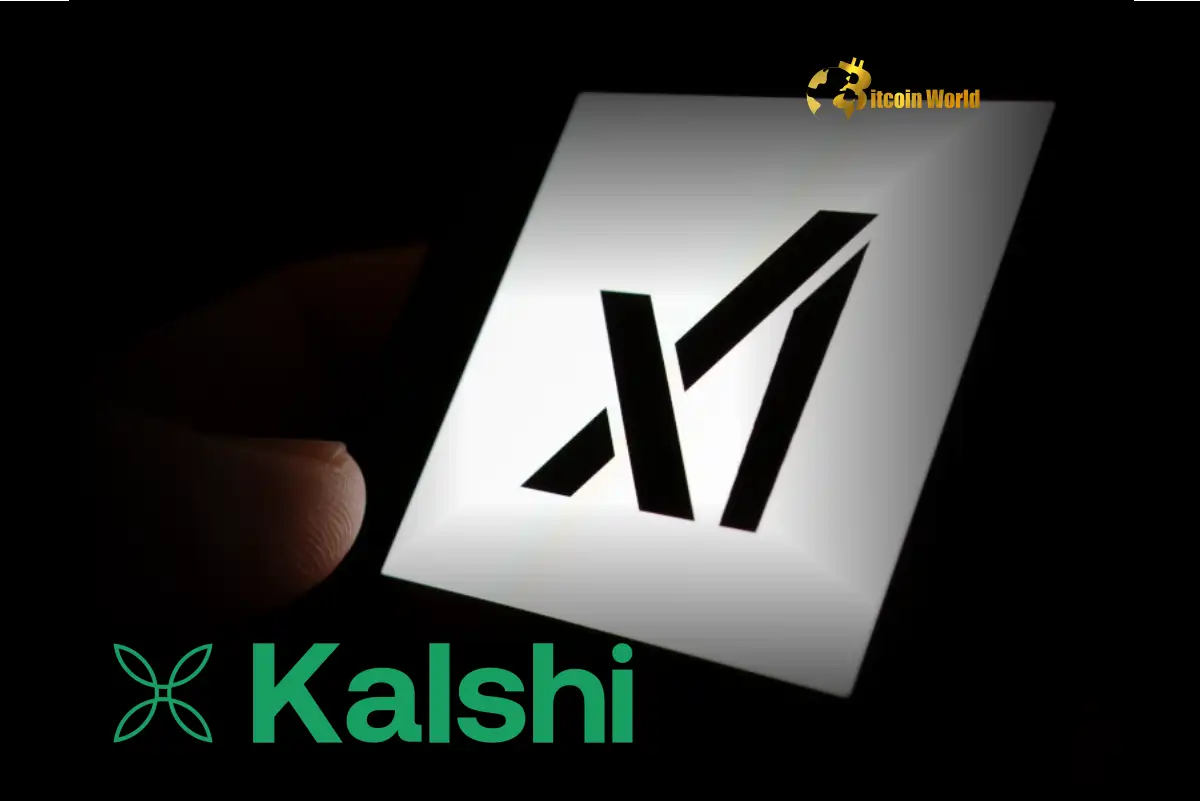BitcoinWorld

Spot ETH ETFs Surge: A Phenomenal 20-Day Inflow Streak
The cryptocurrency world is abuzz with remarkable news as U.S. Spot ETH ETFs continue to attract significant investor capital, painting a picture of growing confidence in Ethereum. For 20 consecutive days, these investment vehicles have seen a consistent influx of funds, signaling a powerful shift in how institutional and retail investors are approaching the second-largest cryptocurrency. This sustained positive momentum is not just a fleeting trend; it reflects deeper underlying shifts in market sentiment, regulatory clarity, and the perceived value of Ethereum as a digital asset.
What Exactly Happened on July 31st for Spot ETH ETFs?
On July 31st, the U.S. Spot ETH ETFs recorded a notable net inflow of $17.09 million. This figure, reported by market observers, underscores the persistent demand for exposure to Ethereum through regulated investment products. While this daily number is significant, it’s the broader context—the 20-day streak of positive flows—that truly captures the market’s attention. Let’s break down the key players in this daily performance:
- BlackRock’s ETHA: Leading the charge, BlackRock’s ETHA saw an impressive $18.27 million in inflows. This strong performance from one of the world’s largest asset managers highlights robust institutional interest and confidence in the product.
- Fidelity’s FETH: Following closely, Fidelity’s FETH attracted $5.62 million. Fidelity’s consistent presence in the crypto ETF space further validates the growing mainstream acceptance of digital asset investments.
- Grayscale’s ETHE: In contrast to the inflows seen by its peers, Grayscale’s ETHE experienced an outflow of $6.80 million. This trend for Grayscale’s product is not uncommon, as it often sees redemptions as investors rotate into newer, potentially more efficient, or lower-fee spot ETF products.
- Other Funds: The remaining funds in the U.S. Spot ETH ETFs landscape reported no net change for the day, indicating that the bulk of the activity was concentrated among the top performers and Grayscale’s unique position.
This daily snapshot is a microcosm of the larger narrative: while some investors are rebalancing their portfolios, the net effect is a strong positive flow into Ethereum-backed ETFs, demonstrating a net increase in capital entering the ecosystem.
Why is a 20-Day Streak of Spot ETH ETFs Inflows So Significant?
A 20-day consecutive streak of net inflows into U.S. Spot ETH ETFs is more than just a statistic; it’s a powerful indicator of sustained investor conviction and growing market maturity. In the often-volatile world of cryptocurrencies, such consistent positive flow speaks volumes about several key factors:
- Building Investor Confidence: A prolonged period of inflows suggests that investors, both institutional and retail, are increasingly comfortable with Ethereum as a legitimate asset class. This confidence is crucial for long-term price stability and growth.
- Institutional Adoption: Large inflows from products managed by giants like BlackRock and Fidelity are a clear sign that institutional capital is not just dipping its toes but actively entering the Ethereum market. This brings greater liquidity, stability, and legitimacy to the ecosystem.
- Regulatory Clarity: The very existence and sustained success of Spot ETH ETFs in the U.S. signify a growing level of regulatory acceptance and clarity. This environment reduces uncertainty for investors and encourages broader participation.
- Market Depth and Liquidity: Consistent inflows contribute to deeper market liquidity, making it easier for large trades to occur without causing significant price fluctuations. This is a hallmark of a maturing financial market.
- Reduced Volatility: While crypto markets are inherently volatile, a steady stream of institutional money can help cushion against extreme price swings, leading to a more stable investment environment over time.
This streak positions Ethereum as a strong contender for mainstream financial integration, moving beyond its early adopter phase into a more recognized and investable asset.
What’s Fueling the Investor Interest in Spot ETH ETFs?
The consistent demand for Spot ETH ETFs is not accidental; it’s driven by a confluence of factors that make Ethereum an attractive investment proposition:
- Ethereum’s Fundamental Strength: Ethereum’s ecosystem is vast and constantly evolving. Its role as the foundational layer for decentralized finance (DeFi), non-fungible tokens (NFTs), and numerous decentralized applications (dApps) provides inherent utility and value. The transition to Proof-of-Stake (PoS) with the Merge and subsequent upgrades have made it more energy-efficient and potentially deflationary through EIP-1559, adding to its appeal.
- Accessibility and Convenience: Spot ETH ETFs offer a familiar and regulated investment vehicle for those who want exposure to Ethereum without the complexities of direct cryptocurrency ownership, such as setting up wallets, managing private keys, or dealing with exchanges. This convenience lowers the barrier to entry for traditional investors.
- Diversification Benefits: For many institutional portfolios, adding digital assets like Ethereum provides diversification benefits. Its correlation with traditional assets can differ, potentially offering unique risk-adjusted returns.
- Anticipation of Future Growth: Investors are likely betting on Ethereum’s continued innovation and adoption. As the backbone of Web3, its potential for future growth remains significant, making it a compelling long-term hold.
- Regulatory Progress: The approval of Spot ETH ETFs by the SEC, following the precedent set by Bitcoin ETFs, has significantly reduced regulatory uncertainty. This clarity is a major draw for institutional funds that require compliant investment avenues.
These combined factors create a compelling narrative for why investors are flocking to Spot ETH ETFs, viewing them as a strategic component of a diversified portfolio.
How Do Spot ETH ETFs Inflows Impact the Broader Crypto Market?
The sustained inflows into Spot ETH ETFs have ripple effects that extend far beyond just the Ethereum price. They influence the broader cryptocurrency market in several ways:
- Positive Sentiment Amplifier: Strong inflows into Spot ETH ETFs create a positive feedback loop, boosting overall market sentiment. This optimism can spill over to other altcoins, leading to a broader market rally as investors feel more confident in the crypto space.
- Increased Legitimacy: The success of these ETFs further legitimizes the entire digital asset class in the eyes of traditional finance. This can pave the way for more crypto-related financial products and services, attracting even more capital.
- Price Discovery and Stability: As more capital flows into Ethereum through regulated channels, it contributes to more efficient price discovery. The increased liquidity can also lead to greater price stability, reducing the extreme volatility often associated with crypto.
- Benchmark for Other Altcoins: Ethereum’s performance, particularly its institutional adoption through ETFs, often serves as a benchmark for other layer-1 blockchains and smart contract platforms. Its success can validate the entire sector.
- Reduced Supply on Exchanges: When investors buy Spot ETH ETFs, the underlying ETH is often held by custodians, effectively removing it from immediate circulation on exchanges. This can reduce selling pressure and contribute to a supply-demand dynamic that favors price appreciation.
In essence, the performance of Spot ETH ETFs acts as a bellwether for institutional interest in the broader crypto market, signaling a maturing landscape.
What Are the Benefits and Challenges of Investing in Spot ETH ETFs?
While Spot ETH ETFs offer compelling advantages, investors should also be aware of potential challenges and considerations:
Benefits:
- Ease of Access: Investors can buy and sell shares of Spot ETH ETFs through traditional brokerage accounts, just like stocks, eliminating the need for crypto exchanges or digital wallets.
- Regulatory Oversight: Being regulated financial products, these ETFs offer a layer of investor protection not always present in direct crypto investments.
- Liquidity: ETFs trade on major stock exchanges, providing high liquidity, meaning investors can easily enter or exit positions during market hours.
- Security: The underlying Ethereum is held by professional custodians, reducing the risk of hacks or loss due to self-custody errors.
- Diversification: Offers a straightforward way to diversify traditional portfolios with exposure to the growing digital asset economy.
Challenges:
- Fees: ETFs typically charge management fees, which can eat into returns over time, unlike direct crypto ownership.
- No Direct Ownership: Investors own shares in a fund that holds ETH, not the ETH itself. This means they cannot stake their ETH or use it in DeFi applications.
- Market Volatility: While ETFs may reduce some volatility, they are still exposed to the inherent price swings of Ethereum and the broader crypto market.
- Tracking Error: There can sometimes be a slight difference between the ETF’s price and the actual price of the underlying asset due to various market factors.
- Regulatory Risks: While approved, future regulatory changes or crackdowns could still impact the market for Spot ETH ETFs.
Understanding both the advantages and disadvantages is crucial for making informed investment decisions regarding Spot ETH ETFs.
Looking Ahead: The Future Trajectory of Spot ETH ETFs
The future for Spot ETH ETFs appears bright, albeit with the usual caveats of a nascent yet rapidly evolving market. The consistent inflows suggest that investor appetite for regulated Ethereum exposure is robust and likely to continue growing. As more educational resources become available and as institutional players continue to allocate capital, we can anticipate increased liquidity and potentially more innovative products in this space.
However, the trajectory is not without potential hurdles. Global regulatory landscapes are constantly shifting, and while the U.S. has made strides, other jurisdictions may impose different rules. Furthermore, the inherent volatility of the crypto market means that even with institutional backing, price fluctuations for Ethereum will remain a factor. Competition among ETF providers will also intensify, potentially leading to fee compression, which could benefit investors.
Ultimately, the long-term success of Spot ETH ETFs will depend on Ethereum’s continued development, its ability to maintain its position as a leading smart contract platform, and the ongoing evolution of the regulatory framework. The current 20-day streak is a powerful testament to the market’s belief in Ethereum’s potential, setting a promising precedent for what’s to come.
In conclusion, the sustained positive net inflows into U.S. Spot ETH ETFs are a significant development in the cryptocurrency investment landscape. The remarkable 20-day streak, highlighted by strong performances from major players like BlackRock and Fidelity, signals a growing maturity and institutional acceptance of Ethereum as a valuable asset. While Grayscale’s outflows indicate portfolio rebalancing, the overall trend is unequivocally positive. This momentum is fueled by Ethereum’s robust fundamentals, increased regulatory clarity, and the convenience offered by these investment vehicles. As these ETFs continue to attract capital, they not only legitimize the crypto space further but also contribute to greater market liquidity and stability, paving the way for a more integrated and accessible digital asset future.
Frequently Asked Questions (FAQs)
1. What is a Spot ETH ETF?
A Spot ETH ETF (Exchange-Traded Fund) is an investment product that directly holds Ethereum (ETH) as its underlying asset. It allows investors to gain exposure to ETH’s price movements without having to directly buy, store, or manage the cryptocurrency themselves.
2. Why are continuous inflows important for ETFs?
Continuous inflows indicate strong and sustained investor demand for the ETF. For a Spot ETH ETF, this means more capital is flowing into the Ethereum ecosystem through regulated channels, contributing to increased liquidity, potentially higher prices for the underlying asset, and greater market legitimacy.
3. How do Spot ETH ETFs differ from futures ETH ETFs?
Spot ETH ETFs directly hold actual Ethereum, reflecting its real-time market price. Futures ETH ETFs, on the other hand, hold futures contracts that bet on Ethereum’s future price, meaning they don’t directly hold the cryptocurrency and can sometimes deviate from the spot price due to contract roll costs and other factors.
4. What are the risks associated with investing in Spot ETH ETFs?
Key risks include market volatility (ETH’s price can be highly volatile), management fees that can erode returns, the absence of direct ownership benefits like staking, and potential regulatory changes that could impact the fund’s operations or market perception.
5. Is this a good time to invest in Ethereum via ETFs?
While consistent inflows are a positive sign, investment decisions should always be based on individual financial goals, risk tolerance, and thorough research. The past performance of Spot ETH ETFs or Ethereum does not guarantee future results. Consulting a financial advisor is recommended.
6. Who are the major players in the Spot ETH ETF market?
Currently, major asset managers like BlackRock (ETHA) and Fidelity (FETH) are prominent players in the U.S. Spot ETH ETFs market, alongside Grayscale (ETHE), which transitioned from a trust to an ETF.
If you found this analysis of U.S. Spot ETH ETFs insightful, consider sharing it with your network! Help us spread awareness about these pivotal developments in the cryptocurrency investment landscape by sharing this article on social media.
To learn more about the latest Ethereum trends, explore our article on key developments shaping Ethereum institutional adoption.
This post Spot ETH ETFs Surge: A Phenomenal 20-Day Inflow Streak first appeared on BitcoinWorld and is written by Editorial Team





